Buoyancy Control Devices (BCD)
The buoyancy control device, or "BCD," is used to compensate for buoyancy shifts that occur as you change depth. The most significant factor in these shifts is your wetsuit, which compresses as you descend and returns to its original thickness as you ascend.
A BCD contains an air bladder that is inflated with air from your cylinder. As you descend, you add air to the BCD to compensate for the loss of your wetsuit's buoyancy. Then, as you ascend, you release air to prevent the expansion of your suit and air in your BCD from causing an uncontrolled or rapid ascent.
You also use the BCD to maintain positive buoyancy while on the surface. This allows you to rest at the surface before and after the dive, and also during surface swims.
The modern BCD also includes a strap for securing your cylinder, and many have pockets for stowing small items.
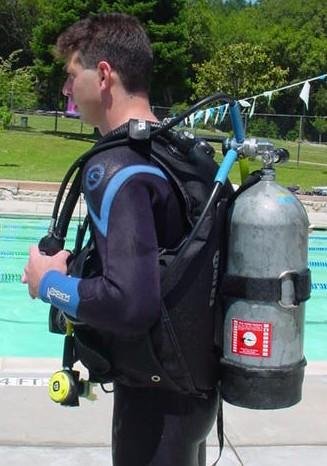
Essential BCD Features
Several features are required to ensure the function and safety of a BC.
Buoyancy adjustments are achieved by inflating and deflating an air bladder. This bladder must be made of a durable material to prevent punctures or premature failure.
One or more overpressure relief valves must be present. These vent excessive pressure to prevent rupturing or over-inflation. Most overpressure relief valves have knobs attached to them to allow manual venting as well. For this reason, they are sometimes referred to as "dump valves."
The power inflator uses air from the diver's cylinder to inflate the BCD, and the air enters the bladder through a flexible inflator hose. Most BCDs have an overpressure relief valve at the base of the inflator hose, and this can be manually vented by pulling the power inflator straight down.
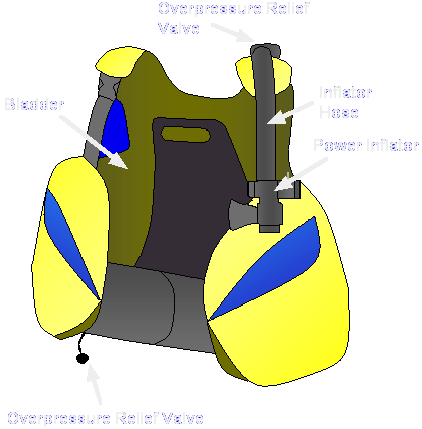
Power Inflator
The power inflator is one of the most important BC components for you to become familiar with. While all brands have different appearances, all share a similar design and essential features.
- Low-Pressure Hose
- The low-pressure hose delivers air from your regulator to the power inflator. It attaches to the air inlet, which is pictured above the low-pressure hose.
- Air Inlet
- The air inlet is used to attach the low-pressure hose to the power inflator.
- Inflate Button
- The inflator button is always the closest button to the air inlet. Pressing the inflator button adds air to the BCD.
- Deflator/Oral Inflator Button
- The Deflator/Oral Inflator button serves two functions. First, pressing this button while holding the power inflator above the BC bladder vents air from the BC. The second function is for oral inflation. Pressing this button while blowing into the mouthpiece allows you to orally inflate the BC in the event the inflator fails or you run out of air.
- Mouthpiece
- The mouthpiece is used to orally inflate the BC in the event the power inflator fails or you run out of air. To use the oral inflator, press the deflator/oral inflator button (the red button in this example) and blow into the mouthpiece. Release the button before removing the mouthpiece from your lips.
- Inflator/Deflator Hose
- The inflator/deflator hose is a flexible hose that attaches the power inflator to the BC. This is the hose that air travels through when you inflate or deflate the BC.
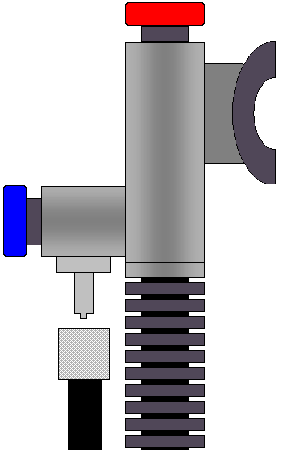






BCD Styles
There are two common styles of BCDs available today. Both operate in the same manner, but differ in the location of the air bladder.
Jacket Style
Jacket BCDs are the most popular style. With this style, the bladder wraps around both sides of the body. This style is popular because it helps maintain a vertical position while resting at the surface. However, when fully inflated, some jacket style BCDs may squeeze the diver.
Back Inflation
With back inflation or rear buoyancy BCDs, the entire bladder is located behind the diver. This means that no matter how much air is in the bladder, the BCD fits and feels the same. However, with this style maintaining a vertical position while at the surface may be more difficult.
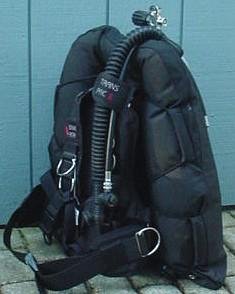
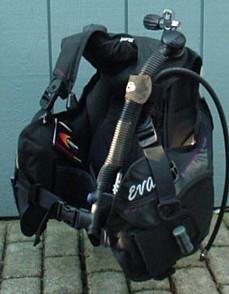
Weight Integrated BCD
A popular feature available in many BCDs is weight integrated pockets. This feature allows you to place some or all of your weight in the BCD instead of on a weight belt.
Weight-integrated BCDs use pockets that are designed to allow quick-release of the weights in the event of an emergency. The release mechanisms vary between manufacturers, so it's important that you demonstrate your system to your dive buddy during the pre-dive buddy check.
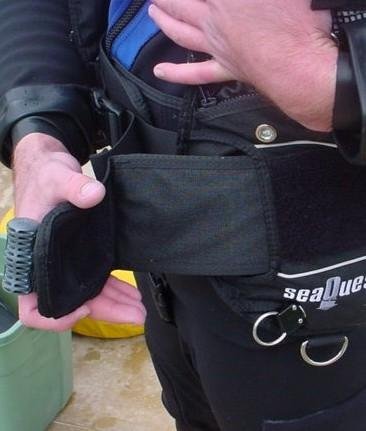
Selecting A BCD
Selecting the proper size BCD is essential for both comfort and safety.
The BCD must fit properly to ensure your comfort during the dive. A BCD that's too tight will restrict your movement and breathing. A loose BCD will float away from your back while you are diving, and rise up when you are resting at the surface.
BCDs fit differently when inflated, so be sure to inflate the BCD while testing its fit. The weight of a cylinder will also affect its fit, so try it on with a cylinder attached.
You should also consider the BCD's lift capacity, which is related to the volume of air that the BCD holds when inflated. A general rule is to have enough lift capacity to lift your weight belt and a full cylinder.
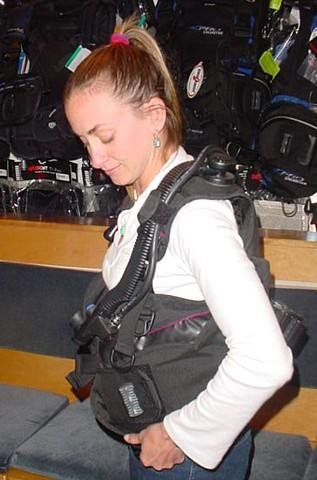
Rinsing & Storing Your BCD
Like all gear, you should rinse your weight belt and BCD with fresh water at the end of the day. This removes the salt crystals, sand, and organic matter that can damage your gear during storage.
It's normal for a small amount of water to enter the BCD while diving, so the inside of the BCD should be rinsed as well as the outside. To rinse the inside of the BCD's bladder, hold the power inflator's deflate button while pouring fresh water into the mouthpiece. Then pick up the BCD and slosh the water throughout the entire bladder. Finally, hold the BCD upside-down and drain it by pressing the deflate button.
Store the BCD partially inflated to allow the inside of the bladder to dry. It's also a wise investment to purchase a special hanger that can support the weight of the BCD.
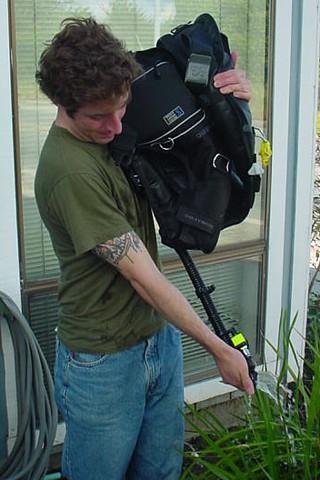
BCD Inspection
Check the BCD's operation before every dive. Make sure the power inflator inflates properly, and fully inflate the BCD to make sure the overpressure relief valves release excessive pressure.
The BCD should be inspected and serviced annually by an authorized technician. During this service, the technician will rebuild the power inflator and test the bladder for leaks.